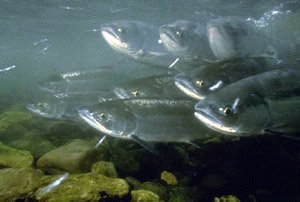Today, the Bering Sea pollock industry took action to reduce chum salmon bycatch. Through the use of the Inter-cooperative Salmon Agreement, the pollock fishery has agreed to allow SeaState to close an additional 1,000 square nautical miles of fishing grounds to reduce encounters with chum salmon, bringing the total area allowed for closure to 5,000 square nautical miles. This is an area larger than the state of Connecticut, and twenty times larger than the Prudhoe Bay oil fields.

Chum salmon are proving to be more abundant so far this year. This is reflected on the pollock grounds and in river escapements. The Alaska Department of Fish & Game (“ADFG”) recently increased Yukon River run size projections to 2.0 million fish, up from 1.3 to 1.6 million chum salmon.
Under the cooperative program, SeaState, an independent organization, reviews federal observer data collected while vessels are actively fishing and has the authority to close specific fishing grounds whenever a salmon “hot spot” is identified. The fishery also uses spatial measures for other species, such as squid, where bycatch was successfully reduced several years ago through area closures.
“We as the Inter-cooperative can take the bull by the horns and address this problem”, explains John Gruver of the United Catcher Boats. “I think we are doing the right thing.”
Several years ago, the Alaska pollock fishery became one of the nation’s first “catch share” fisheries, effectively ending the race for fish and replacing it with a cooperative-based fishing culture.
For more information about the hot-spot program and its effectiveness as a salmon avoidance
tool, view:
* * * *
The Marine Conservation Alliance (“MCA”) is an association of fishermen, processors and
communities involved in the groundfish and crab fisheries in the Federal waters off of the coast
of Alaska.
